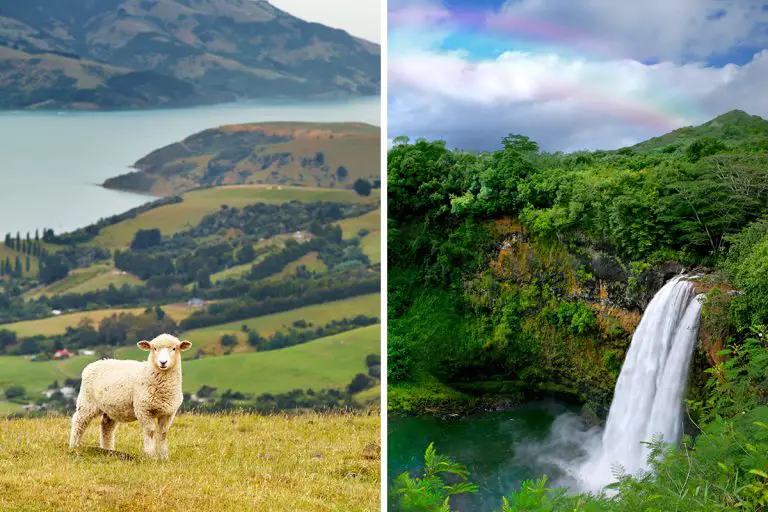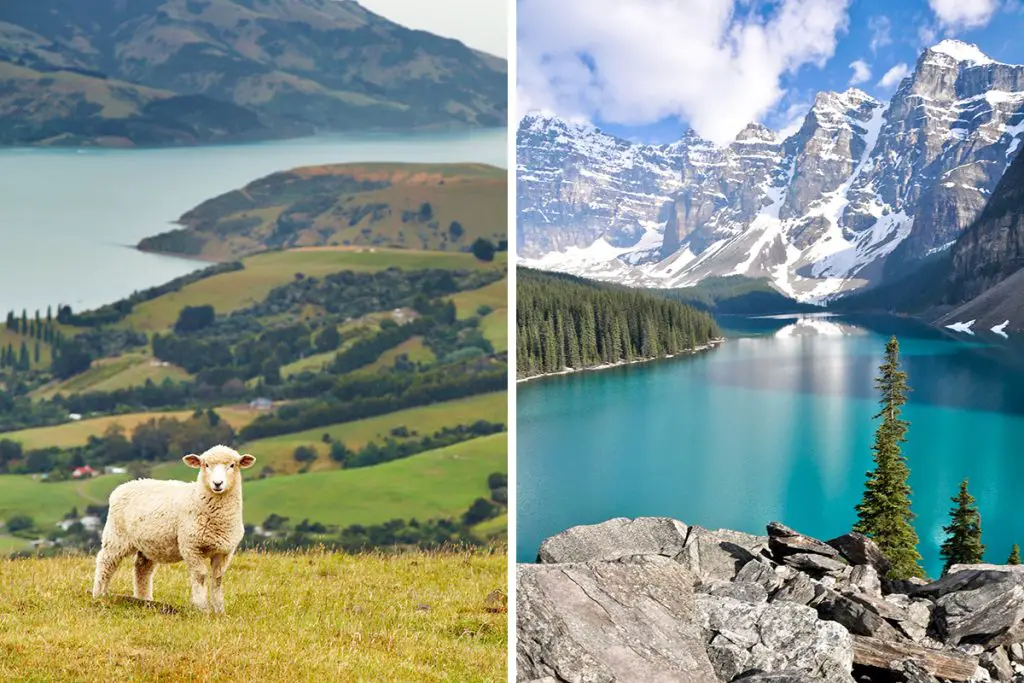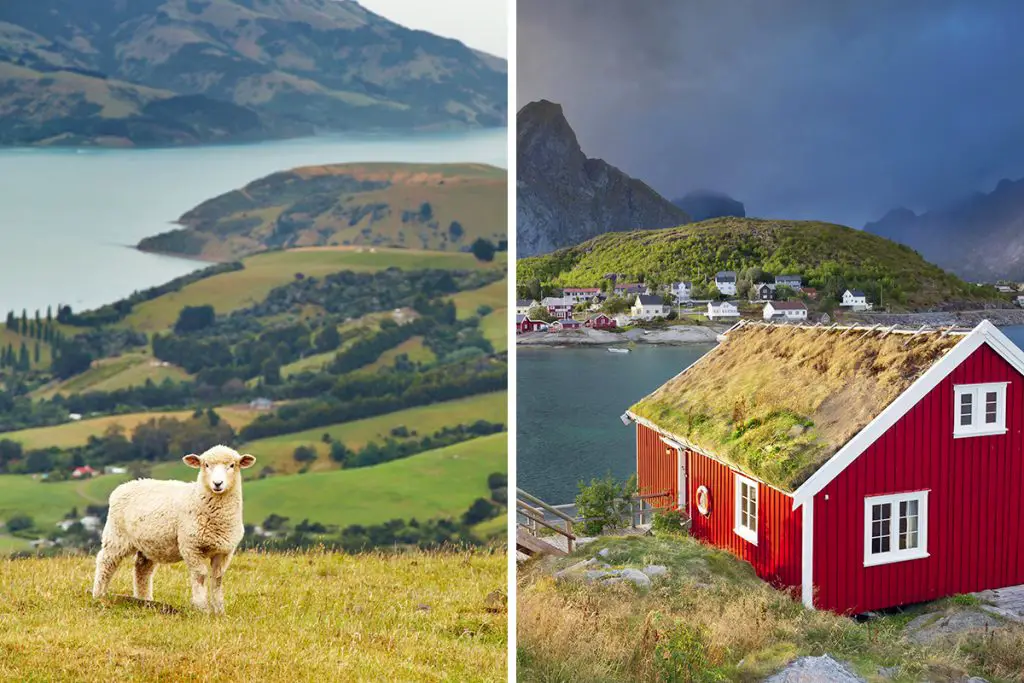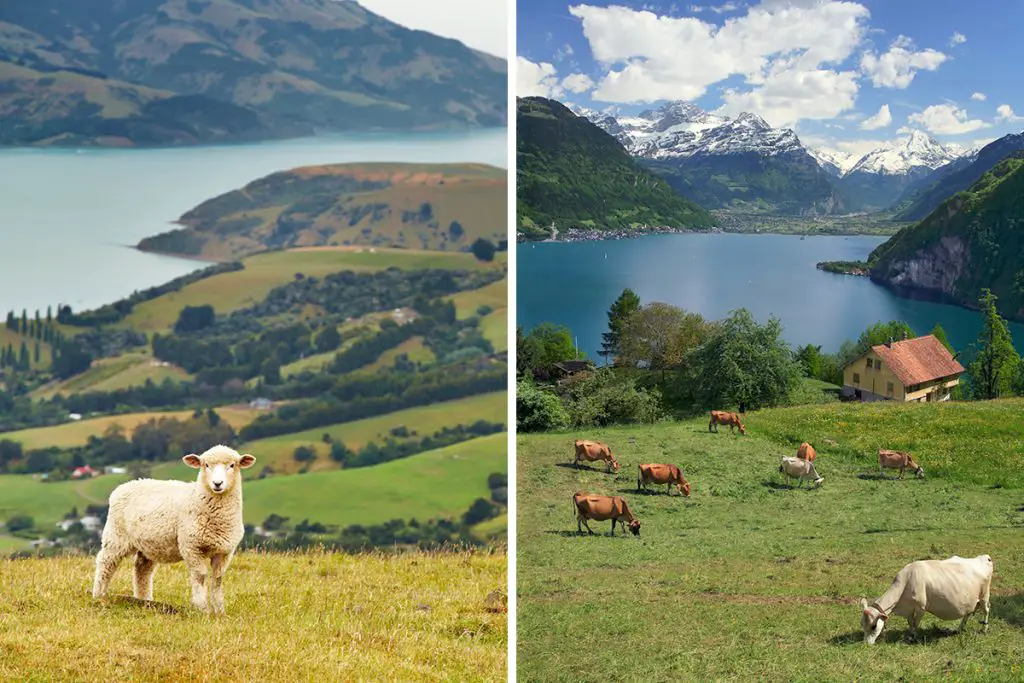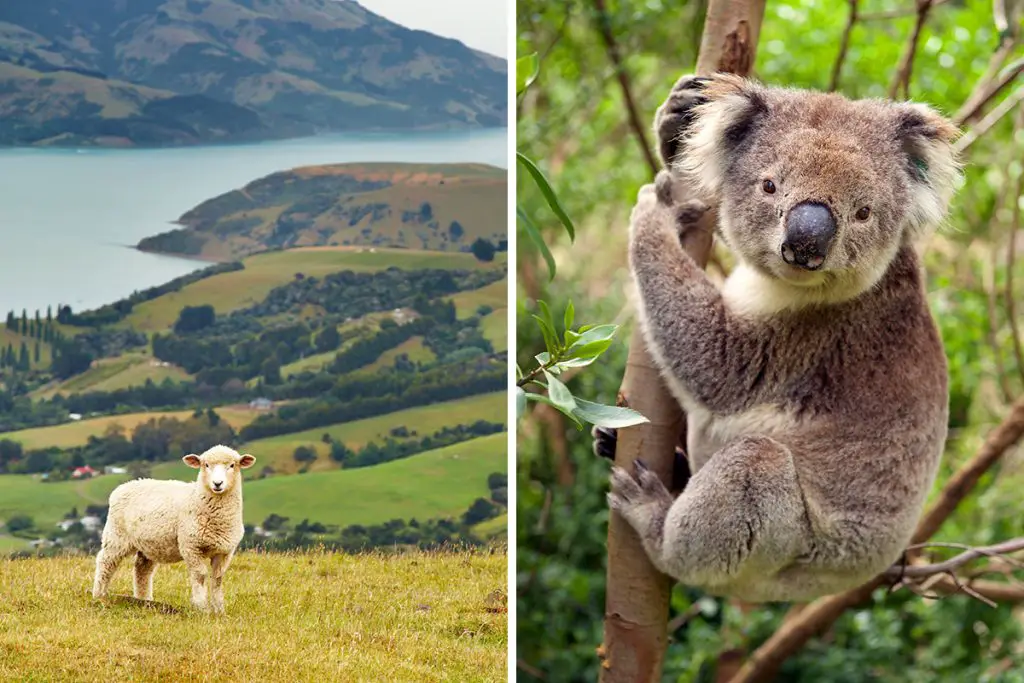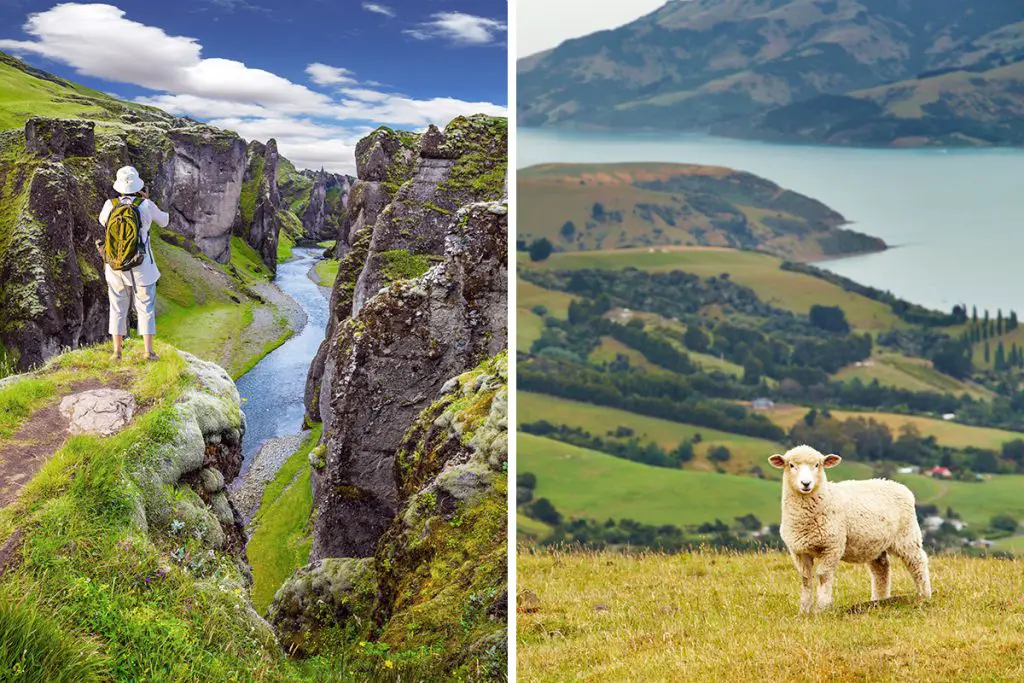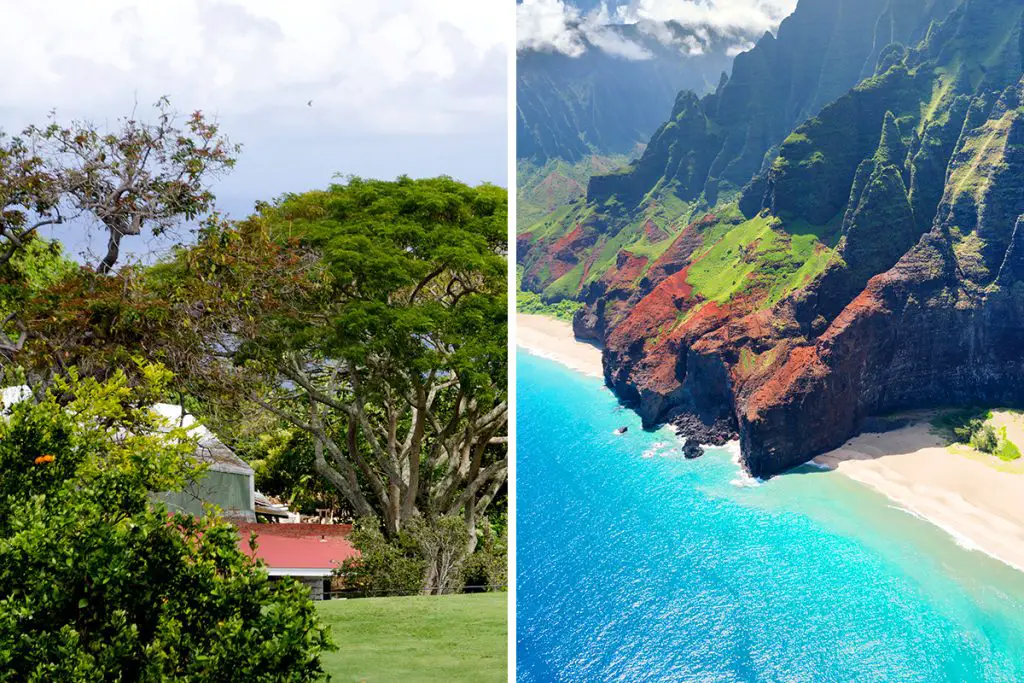Telling New Zealand and Hawaii apart can be like trying to choose between two stunning gemstones. Both dazzle with their own brilliance, each precious and unique in its own way. Ready to uncover what makes each destination unique? To help with your decision, let’s dive into their history and culture.
History & Culture
Venturing into the history and culture of New Zealand and Hawaii can feel like opening a treasure chest of stories and traditions.
New Zealand’s history is a vivid tapestry woven with tales of exploration, fierce warriors, and indigenous life. It’s a land deeply rooted in Maori traditions. Here, the haka, a type of ancient Maori war dance, still echoes in rugby fields and ceremonies, signifying the pulse of the past in the present.
Te Reo, the Maori language, is recognized as an official language, displaying the deep respect for cultural roots that remains integral to New Zealand’s identity.
In contrast, Hawaii’s history unfolds like an epic saga with Polynesian voyagers, mighty kings, and changes brought about by Western contact. Hawaiian culture thrives on the spirit of “Aloha,” a philosophy of love, peace, and compassion.
Hula, a traditional Hawaiian dance, embodies the spirit of the islands, telling their history through movement and melody. The Hawaiian language, though less commonly spoken now, still lingers on every sign and in every “mahalo” (thank you).
Looking beyond the surface, New Zealand’s colonial history is one of negotiation and treaty. The Treaty of Waitangi, signed in 1840, formed a unique bond between the British Crown and Maori tribes, allowing both cultures to coexist and leaving a lasting imprint on the nation’s character.
Similarly, Hawaii has had its share of historic turning points. The most transformative of these was its annexation by the United States in 1898. This event changed Hawaii’s trajectory forever, merging its unique Polynesian heritage with American influences to create a culture unlike any other.
In summary, the histories and cultures of New Zealand and Hawaii are strikingly different, yet equally captivating. The Maori heritage forms a crucial part of New Zealand’s identity, while the Aloha spirit is woven into the fabric of Hawaiian life. As you decide on your travel destination, consider which of these rich histories resonates with you more. Are you drawn to the stirring haka of New Zealand or the inviting hula of Hawaii?
Attractions & Activities
Choosing between New Zealand and Hawaii isn’t just about the scenery, it’s about what you can do and see there. So, let’s compare the unique attractions and activities these destinations offer.
New Zealand is a playground for adventure seekers. In the South Island, you can hike the Routeburn Track, one of New Zealand’s nine Great Walks. This 32-kilometer (20-mile) trail takes you through soaring mountain peaks, lush forests, and glimmering lakes.
For a journey back in time, a visit to the Waitangi Treaty Grounds in North Island provides a deeper understanding of the country’s history. And if you’re a fan of ‘The Lord of the Rings,’ the Hobbiton Movie Set in Matamata is a must-visit.
Hawaii, on the other hand, is a natural haven that holds the keys to countless adventures. Hike the 11-mile (17.7-kilometer) Kalalau Trail on Kauai for breathtaking views of the Na Pali Coast. At the Hawaii Volcanoes National Park on Big Island, you can observe active volcanoes from a safe distance, a sight that’s sure to get your adrenaline pumping.
And for a blend of history and beauty, the Pearl Harbor National Memorial on Oahu offers a poignant tribute to those lost in the attack of 1941.
Yet, both destinations aren’t all about thrills and chills. New Zealand and Hawaii also offer serene experiences. In New Zealand, a boat ride through the glowworm-lit Waitomo Caves feels like drifting through a star-lit night. In Hawaii, a sunrise or sunset viewing at Haleakala National Park on Maui leaves a lasting impression of beauty and tranquillity.
In summary, both New Zealand and Hawaii have a mix of exhilarating and calming activities. Whether you’re navigating the spectacular trails of New Zealand or exploring Hawaii’s volcanic landscapes, both promise an unforgettable adventure.
Beaches
Beaches can be a deciding factor when choosing a holiday destination. Now, let’s explore the different beaches that New Zealand and Hawaii offer.
New Zealand’s coastline is more than 15,000 kilometers (about 9,320 miles) long, dotted with varied beaches. Piha Beach, located around 40 kilometers (approximately 25 miles) from Auckland, is famous for its black sand and fierce surf, making it a magnet for surfers.
On the other hand, The Coromandel’s Hot Water Beach offers a unique experience where you can dig your own hot pool in the sand during low tide.
Hawaii, synonymous with paradise-like beaches, boasts of more than 750 miles (approximately 1,207 kilometers) of coastline. Waikiki Beach in Honolulu, Oahu, with its golden sand and gentle waves, is ideal for first-time surfers.
For those looking for a quiet retreat, Lanikai Beach on Oahu is often considered one of the most beautiful beaches in the world, with its powder-white sand and calm turquoise waters.
Despite their differences, both New Zealand and Hawaii offer beautiful beaches. Whether you seek the wild, black-sand beaches of New Zealand, or the golden, tranquil beaches of Hawaii, you’re bound to find a spot to relax and soak up the sun. So, will it be the rugged beauty of New Zealand’s coast or the tropical allure of Hawaii’s shores?
Eating, Drinking & Nightlife
A region’s food, drink, and nightlife are often an overlooked-but-crucial part of experiencing a new culture. So, let’s delve into the culinary scene and after-dark vibes in both New Zealand and Hawaii.
In New Zealand, food tells a story of the land and its people. A traditional Maori ‘Hangi’ – food cooked underground for several hours – offers an authentic experience. Seafood lovers will relish the ‘kaimoana’ (seafood in Maori), including green-lipped mussels and Bluff oysters.
For dessert, don’t miss out on trying a ‘pavlova,’ a meringue-based sweet treat claimed by New Zealand as a national dish.
In contrast, Hawaii’s cuisine is a colorful fusion of its diverse ethnic mix. ‘Poke’ (cubed raw fish salad) and ‘Kalua pork’ (slow-cooked in an underground oven) are favorites. And no trip to Hawaii is complete without tasting a ‘shave ice,’ a popular local dessert topped with flavored syrup and often condensed milk.
When it comes to drinking, New Zealand is renowned for its world-class wines. You can visit the vineyards of Marlborough, the country’s largest wine region, for a sip of its celebrated Sauvignon Blanc. In contrast, Hawaii’s drinks scene is dominated by tropical cocktails. Try a Mai Tai or Blue Hawaii while watching the sun set over the Pacific.
Nightlife in New Zealand is as varied as its landscapes, from Auckland’s vibrant waterfront bars to Queenstown’s laid-back pubs. In contrast, Honolulu, Hawaii, steals the show with its energetic luaus, live music, and dance performances.
In summary, both New Zealand and Hawaii offer a diverse array of eating, drinking, and nightlife experiences. From traditional Maori meals to tropical Hawaiian cocktails, your taste buds and evening plans are sure to be thrilled in either destination.
Shopping
If you’re someone who likes to bring back a tangible memory from your trips, shopping is an integral part of the travel experience. Let’s see what unique shopping opportunities New Zealand and Hawaii offer.
New Zealand is a haven for quality, locally made goods. For fashionistas, New Zealand’s merino wool clothing is a luxurious and warm treat. You can also find Pounamu (greenstone or jade) jewelry, a significant cultural symbol for Maori. If you’re into arts, the country’s galleries showcase the talents of local artists and craftsmen, from pottery to sculptures.
Hawaii, on the other hand, offers a tropical shopping experience. Local markets are filled with Hawaiian print shirts, dresses, and handmade ‘lei’ (garlands). For a unique souvenir, consider purchasing a ukulele from one of the local music stores. You’ll also find Kona coffee, globally recognized for its unique flavor, making it a perfect gift for coffee lovers.
In summary, both New Zealand and Hawaii offer unique shopping experiences. Whether you’re searching for a piece of traditional greenstone jewelry in New Zealand or a vibrant Hawaiian print dress in Hawaii, shopping can be another way to connect with the local culture.
Accommodation
Accommodation can make or break your holiday experience, so let’s explore what New Zealand and Hawaii have to offer in terms of a place to rest your head after a day of adventure.
In New Zealand, the choices are as diverse as the landscape. For those who love the outdoors, New Zealand offers plenty of camping sites and holiday parks. If you’re into luxury, lodges and boutique hotels provide a warm and upscale experience. The cities, such as Auckland and Wellington, offer a range of modern hotels and serviced apartments for a comfortable stay.
In contrast, Hawaii offers a tropical retreat with its resorts and beachfront villas. Hotels and resorts in areas like Waikiki and Maui provide stunning sea views and luxurious amenities. If you’re looking for a more personal and laid-back experience, vacation rentals scattered across the islands offer a home-away-from-home feeling.
In conclusion, whether you’re looking for a campground under the stars in New Zealand or a luxurious resort in Hawaii, both destinations have accommodations to suit different tastes and budgets.
Family-Friendliness & Children’s Activities
Making sure your destination is kid-friendly can be an essential factor when planning a family vacation. So, let’s compare what New Zealand and Hawaii offer for the younger travelers.
New Zealand is an outdoor paradise for children. Activities like whale watching in Kaikoura and visiting the Hobbiton Movie Set can be exciting for kids of all ages. The Kiwi Birdlife Park in Queenstown lets kids get close to the country’s unique wildlife, including the elusive kiwi bird.
Hawaii, on the other hand, offers a mix of natural and cultural experiences. Kids can learn to surf on Waikiki Beach or explore the Hawaii Volcanoes National Park for an exciting day out. The Polynesian Cultural Center in Oahu provides interactive activities to help kids understand the islands’ history and culture.
In summary, whether it’s the outdoor adventures in New Zealand or the cultural experiences in Hawaii, both destinations offer a wide range of family-friendly activities that will keep the kids entertained and engaged.
Getting There & Getting Around
Traveling to and navigating around a destination can shape your holiday experience, so let’s explore the logistics of visiting New Zealand and Hawaii.
New Zealand is approximately 13,000 kilometers (8,080 miles) from the U.S. west coast, and flights take around 12-14 hours. Hawaii, being centrally located in the Pacific Ocean, is about 3,800 kilometers (2,360 miles) from the U.S. west coast, with flights typically taking 5-6 hours.
Once you’ve landed, getting around in New Zealand is straightforward with its well-developed infrastructure. Self-drive holidays are popular, offering the freedom to explore at your own pace. Alternatively, coach services, domestic flights, and ferries are readily available for intercity travel.
In Hawaii, each island offers its unique charm, and inter-island flights are the quickest way to explore different islands. On the islands, renting a car is the most convenient way to get around. Public transportation like TheBus on Oahu offers an economical option, but the service is limited in rural areas.
To sum up, whether you’re navigating the diverse landscapes of New Zealand or hopping between the islands of Hawaii, each destination offers a unique journey that’s part of the adventure.
Weather
Weather can significantly influence your vacation plans, so let’s look at the climatic differences between New Zealand and Hawaii.
New Zealand, located in the Southern Hemisphere, experiences opposite seasons to those in the Northern Hemisphere. Summer spans December to February, with temperatures ranging from 70-90°F (21-32°C). Winter, from June to August, sees cooler temperatures averaging between 35-60°F (2-15°C). Remember that the weather can be changeable, so packing layers is a good idea.
In contrast, Hawaii enjoys a tropical climate year-round. Temperatures hover around 75-85°F (24-29°C) throughout the year. The dry season runs from April to October, while the wet season is from November to March. However, rainfall is often brief and localized, so it’s possible to find sunshine somewhere on the island even during the wet season.
In summary, whether you’re chasing summer in New Zealand’s December or enjoying the endless summer of Hawaii, understanding the weather patterns will help you pack and plan your activities better.
Safety
Safety is a crucial consideration when choosing your destination. Let’s examine the safety aspects of New Zealand and Hawaii.
New Zealand is generally considered safe for travelers. Petty theft can occur in tourist hotspots, but it’s less common in smaller towns and rural areas. Outdoor enthusiasts should be aware of natural hazards, including rapidly changing weather and strong ocean currents. Always check the local forecasts and heed advice when participating in adventure activities.
Similarly, Hawaii is a safe destination. However, tourists should exercise caution in popular areas, particularly at night. Natural hazards are the primary concern, including strong ocean currents, active volcanoes, and sun exposure. It’s essential to respect nature, heed warning signs, and wear sun protection.
Unique to both destinations is their commitment to environmental protection. In New Zealand, travelers are encouraged to embrace the “Tiaki Promise,” a commitment to care for the land. Hawaii, in the same vein, promotes the “Malama Hawaii” initiative, urging visitors to leave a positive impact on their environment.
In conclusion, both New Zealand and Hawaii are generally safe, but staying aware and respecting local customs and nature is paramount.
Cost
Budgeting is a significant part of travel planning, so let’s compare the costs in New Zealand and Hawaii.
In New Zealand, expect to pay around NZ$200 (around $140) per night for a mid-range hotel and around NZ$20-30 (around $14-21) for a meal at a casual restaurant. Inter-city transport, like coach services, can range from NZ$20-100 (around $14-70), depending on the distance.
Hawaii, on the other hand, is known for its higher cost of living. Accommodations, particularly in popular areas like Waikiki, can range from $200 to $500 per night. A meal at a casual restaurant may cost around $15-30. If you’re planning to island-hop, consider that inter-island flights typically cost around $100 one-way.
In conclusion, while Hawaii may generally be pricier than New Zealand, both destinations offer a range of options that can cater to various budgets. Plan ahead and consider your options to make the most of your resources.
Which Is Better – New Zealand or Hawaii?
Deciding between New Zealand and Hawaii for your next vacation can be a challenging task as both offer unique experiences. Let’s summarize what we’ve discovered about both destinations.
In terms of history and culture, New Zealand offers a deep immersion into Maori culture, while Hawaii provides a melting pot of Polynesian, American, and Asian influences. If you’re looking for rich indigenous traditions, you might lean towards New Zealand, while Hawaii might be your choice for a diverse cultural mix.
When considering attractions and activities, New Zealand’s vast landscapes offer numerous outdoor adventures from hiking to bungee jumping. On the other hand, Hawaii’s fusion of land and sea provides a variety of activities like volcano tours, surfing, and snorkeling.
For adrenaline-pumping outdoor adventure, New Zealand could be the winner. However, if you prefer a mix of land and sea adventures, Hawaii might be a better choice.
The beach experience also differs between the two. New Zealand’s wild, often rugged coastlines can’t be beaten for dramatic beauty. In contrast, Hawaii’s idyllic palm-fringed beaches with warm, turquoise waters are postcard-perfect. If rugged beauty appeals to you, consider New Zealand, but for the iconic tropical beach experience, Hawaii is hard to beat.
Considering eating, drinking, and nightlife, both offer distinctive flavors. New Zealand’s farm-to-table approach and world-renowned wines contrast with Hawaii’s unique ‘fusion cuisine’ and laid-back beach bars.
If you’re a wine lover and appreciate locally sourced food, New Zealand may have the edge. However, if you’re keen on trying innovative dishes and enjoy a beachfront cocktail, Hawaii could be your choice.
When it comes to accommodations, both destinations offer a wide range of options. New Zealand has everything from luxury lodges to budget-friendly backpacker hostels, while Hawaii boasts beachfront resorts and cozy B&Bs. Your choice might depend on the type of lodging you prefer.
Finally, looking at cost, New Zealand generally offers more affordable options for accommodation and dining. Hawaii, with its higher cost of living, tends to be more expensive, but also offers a wider range of luxury options.
In summary, both New Zealand and Hawaii have their unique appeal, and your choice will ultimately depend on your personal preferences, from cultural interests and outdoor activities to budget considerations. Whether you’re seeking adventure in the landscapes of New Zealand or relaxation on Hawaii’s tropical beaches, both destinations promise a memorable vacation.

